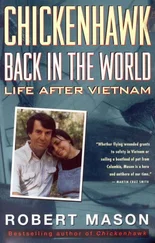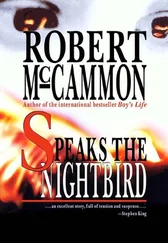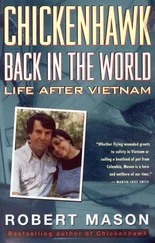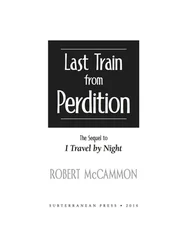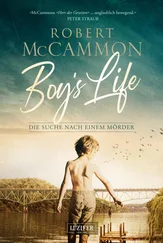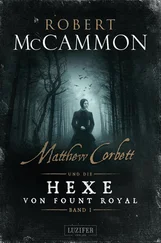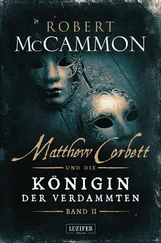“Or you letting me and Towler borrow a Huey like the family car to go visit our friends.”
“Definitely wouldn’t have allowed that.” Ringknocker is still in form, having fun. He holds up his drink. “Here’s to Chickenhawk, fiction though it may be.” He laughs as Jack Home, Jerry, and I raise our drinks. Harry Roper, graduate of West Point, retired brigadier general, has been racing his sailboat single-handedly back and forth across the Pacific. And at seventy-two, he’s winning races.
Turns out that Jack Home, my partner from the ice cartel at Dak To, is a partner in a law firm in Atlanta that specializes in intellectual property, patents, contracts, and he wants to help me get my VTOL (Vertical Takeoff and Landing project) going. You know, gratis, until I make enough money to be interesting.
During the two and a half years I spent writing Chickenhawk, I was not able to do formal research about the war. I relied on my memories and I made mistakes. I confused Stoney Stitzle (Stoopy Stoddard in the book) who shared a tent with Jerry and me at Dak To with someone else. When Ringknocker was told he had to transfer his best pilot to headquarters aviation unit in Saigon, I thought that Ringknocker chose Stoopy because he was not that good. Commanders wanted to keep the best pilots. But I was completely wrong, and I apologize. Ringknocker sent someone else. Stoney Stitzle became one of the Blue Stars’ most accomplished assault pilots after Jerry and I shipped home.
Captain Daisy and I are friends these days although he doesn’t want me to use his real name. He says my description of the way he flew during combat assaults is incomplete since a pilot can fly a helicopter into combat while scrunched up behind his chest protector. We still have this difference of opinion, but I respect Daisy for having gone to Vietnam, flying in combat, and doing the best that he could.
As depicted in the movie We Were Soldiers Once… and Young, Colonel Harold Moore (Grunt Six) was the first man on the ground at LZ Xray during the Ia Drang battle. Around Veterans’ Day every year, at the annual la Drang Valley reunion banquet, Moore has everyone stand up at their table and sound off, “like you got a pair!” with their name and what they did at Ia Drang. At two of the tables some of the aviators who were in the battle, including me, sit with our wives: Jerry Towler, Lee Komich, Daisy, Dallas Harper, Walt Schramm, Ken Dicus, Bill Weber, Neal Parker. We all sound off. Don Reynolds used to stand up and shout, “Don Reynolds, helicopter pilot, LZ Xray and LZ Albany!”
Dicus and I, Jerry and Reynolds, Kiess and Harper are mentioned in We Were Soldiers for making the midnight extraction at LZ Albany. We’ve even met some of the men we hauled out that night at the reunions. They like to shake our hands and thank us for the ride out of hell.
At dawn the next day, we gather with General Moore by the Wall at the Vietnam Veterans Memorial in D.C. where he and Joe Galloway perform a roll call of the dead. It’s obvious to me that General Moore really cares a great deal about the men who did not return.
There are a lot of real people I haven’t mentioned so far. Ray Ward, my friend throughout basic training, advanced infantry training, and flight school, is Ray Welch, now a building contractor in New Hampshire. Ken Klayman, who I traveled with over and back, and who I’ve never seen again is Aaron Varon. W0-1 Tom Wolf is a classmate of mine, Jim Nunn. We called Dick Armstrong Jack Armstrong, and he still owes me a camera and photos that were in my ammo box in the back of his Huey.
The names of the people I don’t know, or whose privacy I want to continue to respect, will remain unacknowledged here.
In 1993, the sequel to Chickenhawk was published. My friend, Mike Costello (author of A Long Time from Home), described it as, “a litany of fuck-ups that makes you glad you’re not Mason!”
Back in the World was intended to flesh out the sketchy last chapter of Chickenhawk, which ends, “No one is more shocked than I.” Referring to big trouble with the law. Now that I’m a graduate of the federal prison rehabilitation process, my criminal tendencies are mostly in check, although I still speed. In Back in the World, I described my life after Vietnam, jobs I tried, businesses I started, marital problems. I also told about my sailboat pot run to Columbia, my arrest, conviction, and imprisonment. My life’s an open book, but this one didn’t sell well and went out of print. You have to buy that chapter used.
Inspired by two young television producers, Chris Fetner and Jeremy Wood, I decided to produce a documentary about the Army helicopter pilots of Vietnam. I flew out to Bell Helicopters in Fort Worth to talk to John Wright, the head of sales for North America. While I was there, bending John’s ear about giving me money to produce the show, he had their senior test pilot take me for a demo ride in their latest Bell 407 helicopter. John said that it was same as Harrison Ford’s. “Even Patricia Cornwell owns one,” said John. “You’re a writer, too. When you going to get one?”
“How much you say they run?”
“Full tank of gas and everything you see here, one point four would do it.”
“I’d buy it, John, but it’s just the wrong color.”
We flew the gorgeous red-with-white-swoops high-tech Bell 407 from Fort Worth out to Mineral Wells. Fort Wolters, former home of the U.S Army Primary Helicopter School, has become a rundown industrial park. We flew over countryside full of sagebrush and willow, out to Stage Field 3, one of the practice fields where we used to train thousands of beginning pilots how to fly. The six lanes at Stage Field 3 were covered with tall grass growing through the spidery network of cracks in the concrete. The control shack leaned, the window was broken, a shutter banged. We came to a hover on lane two. We hovered a minute, watched the grass blowing in the rotor wash. Then we took off, heading for the Brazos River.
I used to come play on the river with a Hiller H-23D I’d borrow from the flight line on Saturdays. I would sit on a ledge, high over the river, then just leap off backward, spin around, dive, and skim down to the sandbars. We didn’t do that that day with the 407, just took a little ride down the river. We swooped out of the riverbed and back to the Bell factory heliport.
When I was thinking about who should be the narrator in my documentary, I recalled that John Wright said Harrison Ford owns a 407. So I called John, asked if he could ask Mr. Ford if he’d be willing to help me out.
John had me send a book to Mr. Ford’s business manager. Two weeks later, the phone rang. Patience answered. Her eyes widened. “The real Harrison Ford?” She squeaked and handed the phone over to me. “Here! Talk to him!”
“Robert Mason?”
“Yes, hello.”
“Robert, I read your book. I think you and I have a lot in common. Consider me a fan.”
“Well, I’m a big fan of yours, too, Mr. Ford.‘
“Call me Harrison.”
“Okay, Harrison.”
And he agreed to introduce my documentary on screen, and to record additional narration. Free!
Just before we started filming the host introduction scene in September 2000, Harrison invited me to come up to New York and go for a ride in his chopper. His Gulf-stream G-4 was coming down to National, in D.C. I could ride back on it. I flew up, the only passenger in this beautiful jet, spent the night at a motel near the airport. Harrison picked me up the next morning, took me to his hangar at Teterboro. We sat in the office and talked about a script for his narration for a while, then we went into the hangar to get his chopper. As we walked under the G-4, he said he didn’t fly it, just the small planes and the chopper. He waved around the hangar. Five airplanes and a Bell 407 were parked around the G-4. I noticed a Beech Bonanza and a DeHaviland Beaver. The Beaver was restored, perfect down to the rivets. He said it was in better shape than the one he flew in Six Days, Seven Nights. We walked over to his 407. It was equipped with emergency floats, skinny tubes above the skids that can be inflated to full size in a second if needed. Harrison grabbed a powered tug, steered it over to his 407. He slipped the tug under the fuselage between the skids, then pushed a button. Jacks whirred up to the skid supports then lifted the machine an inch or two off the floor. Harrison steered the tug outside, set the helicopter down, and removed the tug. We climbed up the side of the 407 and checked out the rotor head and pitch-change links and stuff. We climbed down and talked while he finished his walk-around inspection. We were both impressed with the size of the turbine under the cowl. This helicopter can carry seven people at 150 miles an hour, yet either of us could’ve lifted the engine barehanded (well, Harrison could have). We got inside the cockpit where I watched him go through his checklist. He flipped a switch. The chopper whined, whirred, did its own instrument and power check, green light blinked on. We both wore headsets with voice-activated mikes. I heard Harrison call the tower for takeoff. He lifted off, steady as a rock, hovered out to the active runway. He nosed over, we were off, heading for Manhattan. This was in September 2000. We flew from Teterboro down the Hudson at about 400 feet. When we flew past the World Trade Center, Harrison said, “Can you believe they let us fly this close?”
Читать дальше

